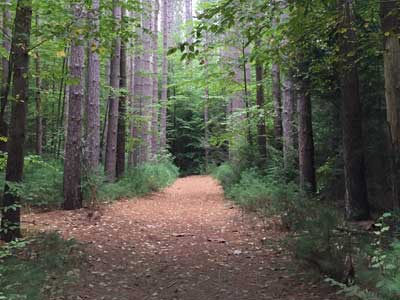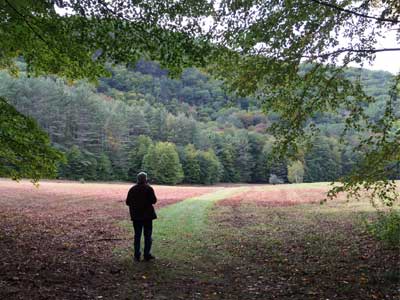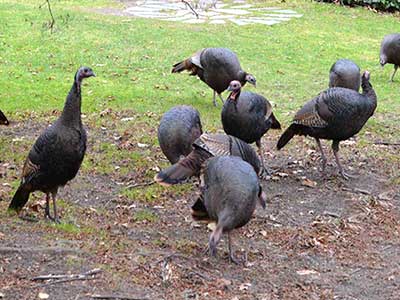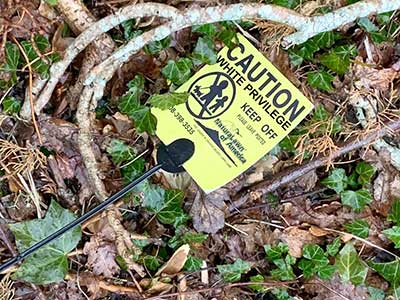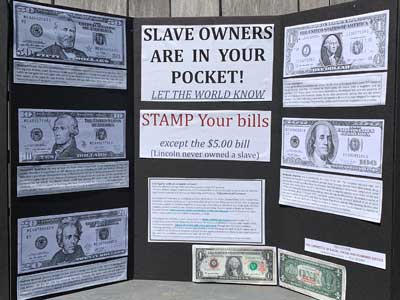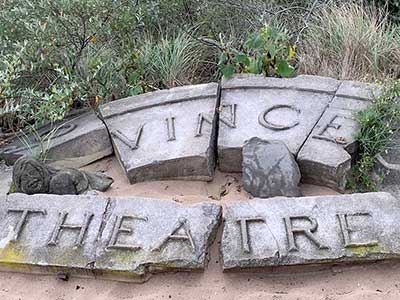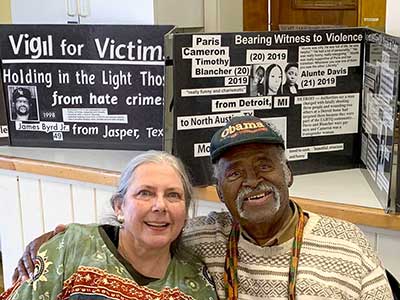by Grace Ebert | June 2020
When Adrian Brandon starts to color a portrait, he sets a timer. For his rendering of Breonna Taylor, the clock is set to 26 minutes—for George Floyd, 46 minutes, for Tony McDade, 38, and for Aiyana Stanley Jones, just seven. “When the alarm sounds, I am hit with a wave of emotions ranging from anger, to deep sadness, to hopelessness, to feeling lucky that I am still here,” he says. The Brooklyn-based artist is working on Stolen, a series of partially filled-in depictions of Black people murdered by police. Each portrait remains incomplete as Brandon only colors one minute for each year of the subject’s life before it was cut short. “Aside from being able to give the viewer a visual of the various ages affected by police violence, the timer creates a lot of anxiety for me as the artist,” he says, wondering, “’When is the timer going off?’ ‘Will I be able to finish this eye?’ ‘Damn, I haven’t even gotten to the lips yet.’”
TAGS: [Strategies] [2020’s] [Art & Culture] [Racial Terrorism] [Police Shootings] [Policing] [Systemic Racism] [Black Lives Matter] [Advocacy]
Resource Links Tagged with "Strategies"
Mass. among States with Highest Levels of White Supremacist Propaganda in 2020, Report Says
by Aaron Morrison | March 2021
White supremacist propaganda reached alarming levels across the U.S. in 2020, according to a new report that the Anti-Defamation League provided to The Associated Press. … Massachusetts was among states that saw the highest levels, also including Texas, Washington, California, New Jersey, New York, Virginia and Pennsylvania, according to the report. The propaganda appeared in every state except Hawaii.
TAGS: [Strategies] [2020’s] [White Supremacy] [Justice System] [Systemic Racism] [Black Lives Matter] [Policing] [“All Lives Matter”] [Accountability]
How Native Americans Were Vaccinated Against Smallpox, Then Pushed Off Their Land; Nearly Two Centuries Later, Many Tribes Remain Suspicious of the Drive to Get Them Vaccinated Against the Coronavirus
by Dana Hedgpeth | March 2021
More than 180 years ago, the federal government launched the largest effort of its kind in the United States to vaccinate Native Americans against the deadly disease of smallpox… In 1832, Congress passed legislation — the Indian Vaccination Act — that allowed the federal government to use about $17,000 to hire doctors to vaccinate Native Americans who were living near White frontier settlements. Many White settlers feared that Indians would spread the disease to them. “It wasn’t in the interest of Indian people,” said Pecos, who is also co-director of the Leadership Institute at the Santa Fe Indian School. “It was a way of vaccinating them to move them so White Americans could move them into Western lands.”
TAGS: [Strategies] [2020’s] [Indigenous] [Health Disparities] [Politics] [Social Justice] [Systemic Racism] [Racial Terrorism] [Definitions] [White Supremacy] [White Culture] [White Privilege] [Silencing POC] [History]
The Decline of Black Business; and What it Means for American Democracy
by Brian S. Feldman | May 2017
The last thirty years also have brought the wholesale collapse of black-owned independent businesses and financial institutions that once anchored black communities across the country. In 1985, sixty black-owned banks were providing financial services to their communities; today, just twenty-three remain. In eleven states that headquartered black-owned banks in 1994, not a single one is still in business. Of the fifty black-owned insurance companies that operated during the 1980s, today just two remain. Over the same period, tens of thousands of black-owned retail establishments and local service companies also have disappeared, having gone out of business or been acquired by larger companies. Reflecting these developments, working-age black Americans have become far less likely to be their own boss than in the 1990s.
TAGS: [Strategies] [2010’s] [Art & Culture] [Justice System] [History] [Economics] [Systemic Racism] [Black Lives Matter] [Social Justice] [Politics] [Slavery] [Civil War] [White Supremacy] [White Privilege] [Racial Covenants] [Racial Terrorism]
Peabody Museum Apologizes For Practices Around Native American Cultural Objects, Announces Policy Changes
by Oliver L. Riskin-Kutz | March 2021
Peabody Museum of Archaeology and Ethnology administrators apologized for the “pain” the museum caused by its refusal to voluntarily return certain funerary objects to Native American tribes and pledged to reverse the policy in response to a letter from the Association on American Indian Affairs last month criticizing the museum. In February, the Association sent a letter to University President Lawrence S. Bacow accusing Harvard of legal and moral violations in the Museum’s practices regarding its collections of Native American human remains and cultural objects. In the letter, the nonprofit said Harvard’s practices are in violation of the Native American Graves Protection and Repatriation Act.
TAGS: [Strategies] [2020’s] [Indigenous] [Art & Culture] [Systemic Racism] [White Culture] [Social Justice]
The Treaty That Forced the Cherokee People from Their Homelands Goes on View
by SMITHSONIAN VOICES | April 2019
On Friday, April 12, 2019, representatives of the three federally recognized tribes of the Cherokee people—the Cherokee Nation of Oklahoma, Eastern Band of Cherokee Indians, and United Keetoowah Band of Cherokee Indians in Oklahoma—came together at the National Museum of the American Indian in Washington, D.C., for the installation of the Treaty of New Echota in the exhibition Nation to Nation: Treaties Between the United States and American Indian Nations. Negotiated in 1835 by a minority party of Cherokees, challenged by the majority of the Cherokee people and their elected government, the Treaty of New Echota was used by the United States to justify the forced removal of the Cherokees from their homelands along what became known as the Trail of Tears.
TAGS: [Strategies] [2010’s] [Indigenous] [History] [Art & Culture] [White Supremacy] [White Culture] [Systemic Racism] [Politics] [Justice System]
Why History Matters: the Legacy of Slavery
by David Rosen | January 2021
When recalling Lincoln, many New Yorkers may remember the famous speech he gave at Cooper Institute (aka Cooper Union) in February 1860 calling to limit the extension – but not the end – of slavery. It was a critical campaign speech that helped him secure the Republican Party nomination for President. In November, he was elected, and, in December, South Carolina was the first state to secede from the Union.
Unfortunately, few American – and likely very few New Yorkers – will recall that Lincoln’s speech was strongly attacked by city business leaders and the Democratic Party, many assailing him with the racist slogan, “Black Republican.” More important, Lincoln’s election sparked a strong movement in the city, led by Mayor Fernando Wood, to join the South and secede from the Union. This is one of the many important historical stories retold in an informative new book by Jonathan Daniel Wells, The Kidnapping Club: Wall Street, Slavery and Resistance on the Eve of the Civil War (Bold Type Books). Slavery was formally abolished in New York State in 1827, but the slave trade lived on in the city until the Civil War. Wells argues that the slave trade persisted in New York City in the decades before the Civil War because it was the capital of the Southern slave economy.
TAGS: [Strategies] [2020’s] [History] [Civil War] [Slavery] [Politics] [Social Justice] [Policing] [Black Lives Matter] [Justice System] [White Supremacy] [White Culture] [Silencing POC] [Racial Terrorism] [Social Justice]
Reparations Matter: Accountability Begins with Understanding
*Paywall Alert
by Douglas Haynes | February 2021
Last month’s violent insurrection at the US Capitol overshadowed the re-introduction of H.R. 40 on January 4, 2021. Introduced by Rep. Shelia Jackson Lee (D-Texas), this bill provides for funding for a commission to study and develop reparation proposals for African Americans. The two events could not be more different. One was a violent assault on the US Congress by extremists. The other reflected the deliberate law-making process of a modern democracy. In seeking to de-certify the votes of millions of Americans, the protestors sought nothing less than the restoration of white supremacy in the slogans “Make America Great Again” or “Take Back Our Country.” By contrast, the co-sponsors of the House bill called on the federal government to finally come to terms with the costs and consequences of the legal enslavement and differential treatment of Black people in both the past and present.
TAGS: [Strategies] [2020’s] [Reparations] [White Supremacy] [White Culture] [White Privilege] [Systemic Racism] [Black Lives Matter] [Social Justice] [Definitions] [Slavery] [Politics] [History]
We Were the Last of the Nice Negro Girls
by Anna Deavere Smith | February 2021
This article is part of “Inheritance,” a project about American history and Black life.
In 1968, history found us at a small women’s college, forging our Black identity and empowering our defiance. I knew nothing about the multitude of small colleges across the U.S. that had been founded, many by religious institutions, for the specific purpose of educating white women. Nor did I know anything about “suitcase schools,” some of which had reputations as glorified finishing schools where girls were focused on meeting boys attending nearby institutions. (They were called “suitcase schools” because on Fridays the girls took off to spend the weekend with their prospective husbands.) But in 1966, as my counselor put it to my mother, many of these all-girls colleges were “looking for nice Negro girls like Anna.” My father did not like the idea. He was adamant that I attend Howard or Morgan State or some other historically Black college or university, just as he and his siblings and my older cousins had done. My mother and I made our case about “opportunity.” He became emphatic: If I went to a white women’s college, he said, I’d have no social life. This was a legitimate concern—but up to that point, my father’s strictness had severely circumscribed my “social life.” Now he was suddenly concerned about it?
TAGS: [Strategies] [2020’s] [History] [Systemic Racism] [Black Lives Matter] [-ing While Black] [White Privilege] [White Culture] [Policing] [Social Justice] [Assumptions]
How the GI Bill’s Promise Was Denied to a Million Black WWII Veterans; The Sweeping Bill Promised Prosperity to Veterans. So Why Didn’t Black Americans Benefit?
by Erin Blakemore | September 2019
When Eugene Burnett saw the neat tract houses of Levittown, New York, he knew he wanted to buy one. It was 1949, and he was ready to settle down in a larger home with his family. The newly established Long Island suburb seemed like the perfect place to begin their postwar life—one that, he hoped, would be improved with the help of the GI Bill, a piece of sweeping legislation aimed at helping World War II veterans like Burnett prosper after the war. But when he spoke with a salesman about buying the house using a GI Bill-guaranteed mortgage, the door to suburban life in Levittown slammed firmly in his face. The suburb wasn’t open to Black residents.
TAGS: [Strategies] [2010’s] [Systemic Racism] [Racial Covenants] [Black Lives Matter] [Economics] [White Privilege] [White Culture] [White Supremacy] [Denial] [Housing] [Politics] [History] [Social Justice]
How U.S. Backed Banks Robbed Ex-Slaves of $66 Million
by Jared Brown | Month Unknown 2016
In 1871, Congress authorized banks to provide business loans and mortgages. Paradoxically, such mortgages and loans were usually administered to whites at the expense of black depositors. Risky investments and lending patterns, coupled with cronyism and corruption at the level of upper management, slowly undermined the stability of the bank. According to Black Past, “By 1874, massive fraud among upper management and among the board of director had taken its toll on the bank. Moreover, economic instability brought upon by the Panic of 1873, coupled with the bank’s rapid expansion, proved disastrous.” The Freedmen’s Bank was officially closed on June 29, 1874. At the point of closing, 61,144 black depositors were robbed of the modern equivalent of $66 million. The failure of the bank left many black depositors and borrowers distrustful of the white banking community, especially since the Freedmen’s Bank was established and managed by white men.
TAGS: [Strategies] [2010’s] [Systemic Racism] [History] [White Supremacy] [White Culture] [White Privilege] [Slavery] [Accountability] [Social Justice] [Economics] [Denial] [Racial Covenants] [Black Lives Matter]
Tignon Laws: The Dreadful Rule That Banned Black Women from Displaying Their Hair
by Farida Dawkins | February 2018
… there was a time when black women weren’t allowed to display their hair in public. Keep reading to learn about the Tignon Laws and how it was used to fuel racial tensions in the United States. A tignon (tiyon) is a headdress used to conceal hair. It was adorned by free and slave Creole women of African ancestry in Louisiana in 1786. The sumptuary law was enacted under Governor Esteban Rodriguez Miró. The regulation was meant as a means to regulate the style of dress and appearance for people of color. Black women’s features often attracted male white, French, and Spanish suitors and their beauty was a perceived threat to white women. The tignon law was a tactic used to combat the men pursuing and engaging in affairs with Creole women. Simply put, black women competed too openly with white women by dressing elegantly and possessing note-worth beauty.
TAGS: [Strategies] [2010’s] [Systemic Racism] [Silencing POC] [Black Lives Matter] [Definitions] [Denial] [White Supremacy] [White Privilege] [Slavery] [History]
Indiana Republicans Boo Black Lawmakers Speaking About Discrimination
by Stephen A. Crockett Jr. | February 2021
Nothing says discrimination like booing a Black person trying to talk about discrimination. Such is life during a floor debate inside the Indiana Statehouse on Thursday in which Black lawmakers claimed that a bill would allow students in the largely white St. Joseph County township to leave the racially diverse South Bend Community Schools to join a smaller, rural school made up of mostly white students.
TAGS: [Strategies] [2020’s] [Systemic Racism] [White Supremacy] [White Culture] [White Privilege] [Social Justice] [Black Lives Matter] [-ing While Black] [Politics] [Silencing POC]
The Shameful Existence of Sundown Towns in America
by BLACKTHEN | February 2021
Don’t let the sun set on you in a sundown town. That’s what signs at the city limits of all-white communities warned when African-Americans were not allowed to live there or even visit after the sun set. This method of exclusion was often held by an official policy or restrictive covenant-. The practice of excluding blacks from American towns was so prevalent that, by 1936, it became the impetus for Harlem civic leader Victor Green to pen the Negro Motorist Green-Book, a guide designed to help African-American travelers avoid places where they could be harassed, threatened, or even killed. Today, it is illegal for sundown towns to exist on paper due to the 1968 Fair Housing Act, but some believe that communities remain sundown by reputation and reluctance to diversify.
TAGS: [Strategies] [2020’s] [History] [White Supremacy] [White Culture] [White Privilege] [Systemic Racism] [Racial Covenants]
Black Cop Who Shot a White Woman Sentenced to 12 1/2 Years in Prison
by blacknews.com | June 2019
The sentencing came two days after Noor’s lawyers asked the judge for no jail time or even just “less time than what sentencing guidelines call for.” They claimed that Noor showed a rather good attitude and sense of remorse during trial. Noor, who is a 33-year old Somali-American, was responding to a 911 call of a possible assault near the caller’s house. Noor was with his partner, Matthew Harrity, when they arrived on the scene and he saw a woman in a pink shirt with blond hair outside of Harrity’s window. Noor said that when the woman raised her right arm, he was threatened and his initial reaction was to fire one shot. “My intent was to stop the threat and save my partner’s life,” he said. Afterwards, he said he immediately realized that he had shot an innocent woman. The woman named Justine Damond is an Australian and she was the one who called 911 at that time. He remorsefully said on the stand, “I felt like my whole world came crashing down. I couldn’t breathe.”
TAGS: [Strategies] [2010’s] [Justice System] [Systemic Racism] [Policing] [Police Shootings] [White Privilege] [White Culture]
8 Facts You Should Know about Racial Injustice in the Criminal Legal System; Racial discrimination Has Been Ingrained in the Criminal Legal System from Its Earliest Days and Persists Today.
by Daniele Selby | February 2021
The legacy of slavery, racist Jim Crow laws, and hateful lynchings has translated into modern-day mass incarceration and the disproportionate imprisonment of Black people. No where is that seen more clearly than in prisons like the Mississippi State Penitentiary — also known as Parchman Farm — and Louisiana’s Angola prison, which were built on and modeled after slave plantations and where several Innocence Project clients have been incarcerated. Racial discrimination and bias has been ingrained in the criminal legal and law enforcement system from its earliest days and continues to pervade every level of the system today. The Innocence Project, with your support, is committed to addressing these injustices. These eight statistics highlight the ways in which racial inequality persists in the criminal legal system today and contributes to wrongful conviction.
TAGS: [Strategies] [2020’s] [Slavery] [Justice System] [History] [Prison System] [Systemic Racism] [Social Justice] [Racial Bias] [Black Lives Matter] [Police Shootings] [Policing] [Accountability] [-ing While Black] [Racial Terrorism]
Environmental Racism in Louisiana’s ‘Cancer Alley’, Must End, Say UN Human Rights Experts
by UN News | March 2021
The further industrialization of so-called “Cancer Alley” in the southern United States, known for its pollution-emitting chemical plants, should be halted according to a large group of independent UN human rights experts, who on Tuesday branded it a form of “environmental racism”. Originally dubbed “Plantation Country”, Cancer Alley, which is located in the southern state of Louisiana along the lower Mississippi River where enslaved Africans were forced to labour, serves as an industrial hub, with nearly 150 oil refineries, plastics plants and chemical facilities. The ever-widening corridor of petrochemical plants has not only polluted the surrounding water and air, but also subjected the mostly African American residents in St. James Parish to cancer, respiratory diseases and other health problems. “This form of environmental racism poses serious and disproportionate threats to the enjoyment of several human rights of its largely African American residents, including the right to equality and non-discrimination, the right to life, the right to health, right to an adequate standard of living and cultural rights”, the experts said.
TAGS: [Strategies] [2020’s] [Environment] [Health Disparities] [Slavery] [Black Lives Matter] [Social Justice] [Politics] [Systemic Racism] [White Supremacy] [White Culture] [White Privilege]
Cornel West: The Whiteness of Harvard and Wall Street Is “Jim Crow, New Style”
by George Yancy | March 2021
Cornel West is a preeminent public intellectual, a brilliant philosopher-gadfly and a towering thinker whose critically engaging voice and fearless speech have proven indispensable for calling out injustice wherever it exists. He is a force grounded within a prophetic tradition that refuses idols, even if that idol is democracy itself. He is a bluesman who grapples with the funk of life through a cruciform of love within a crucible of catastrophe, where despair never has the last word. West isn’t a typical professional philosopher. As a professor at Yale in the mid-1980s, he was arrested for attempting, through protest, to get the university to withdraw its investments from all companies that were doing business in Apartheid South Africa. And he relentlessly exposes the limits of disciplinary smugness and the hypocrisy of epistemological “purity.”
TAGS: [Strategies] [2020’s] [Role Model] [Systemic Racism] [White Culture] [Denial] [History] [Definitions] [Anti-Racism] [Social Justice] [Teachers]
Racial Discrimination Has Been ingrained in the Criminal Legal System from its Earliest Days and Persists Today
by Daniele Selby | February 2021
The legacy of slavery, racist Jim Crow laws, and hateful lynchings has translated into modern-day mass incarceration and the disproportionate imprisonment of Black people. No where is that seen more clearly than in prisons like the Mississippi State Penitentiary — also known as Parchman Farm — and Louisiana’s Angola prison, which were built on and modeled after slave plantations and where several Innocence Project clients have been incarcerated. Racial discrimination and bias has been ingrained in the criminal legal and law enforcement system from its earliest days and continues to pervade every level of the system today. The Innocence Project, with your support, is committed to addressing these injustices. These eight statistics highlight the ways in which racial inequality persists in the criminal legal system today and contributes to wrongful conviction.
TAGS: [Strategies] [2020’s] [Justice System] [Slavery] [Prison System] [Systemic Racism] [Social Justice] [White Supremacy] [White Culture] [White Privilege] [White Blindness] [Policing] [Implicit Bias] [Accountability] [Denial] [History] [-ing While Black] [Black Lives Matter]
American Churches are Apologizing for a Centuries-Old Injustice That Still Reverberates Today; How We Can Start to Undo the Damage
by Melissa J. Gismondi | September 2018
In 2016, the General Assembly of the Presbyterian Church (PCUSA) repudiated the historic “doctrine of discovery.” Although it might sound benign, the doctrine was the pernicious theory that Christians could claim and conquer land inhabited by non-Christians. It helped justify and promote the violent colonization of indigenous lands throughout the Americas. This summer, the Assembly followed up on that repudiation by issuing a report outlining specific actions the church can take to grapple with the doctrine’s legacy. They include official acknowledgments before meetings of the indigenous nations on whose land the meeting is taking place, as well as more discussion of indigenous theologies and educational resources on the doctrine.
TAGS: [Collective Action] [2010’s] [Indigenous] [Faith-Based/Spiritual] [History] [Systemic Racism] [Justice System] [Denial] [White Culture] [White Supremacy] [White Blindness] [Accountability] [Economics] [White Privilege] [Role Model] [Strategies] [Tips-Dos/Don’ts]
How to Use the Siri ‘I’m Getting Pulled Over’ Shortcut to Record Police Encounters During Traffic Stops with Your iPhone
*Share with POC you might know that might be of some help in keeping them safe
by Ennica Jacob | February 2021
Arizona resident Robert Petersen used this update to create his own third-party shortcut, initially known as “Police” and now known as “I’m Getting Pulled Over.” It aims to assist users during traffic stops by automatically recording their interactions with police officers. First developed in 2018, the shortcut activates the Do Not Disturb feature, turning off all incoming calls, messages, and notifications. This is to reduce the chance that a police officer will be startled by your phone ringing or flashing, and act aggressively. Next, it’ll send a text message with your current location to all the contacts that you’ve selected beforehand. At the same time, your phone will start recording a video with the front camera (i.e. the one above the phone’s screen).
TAGS: [Strategies] [2020’s] [Tips-Dos/Don’ts] [Accountability] [Policing] [-ing While Black] [Bystander Intervention] [Racial Terrorism]
Nez Perce Tribe reclaims 148 acres of ancestral land in Eastern Oregon
by Cassandra Profita | December 2020
The Nez Perce Tribe is reclaiming an ancestral village site in the Eastern Oregon town of Joseph more than a century after being pushed out the area. This month, the tribe purchased 148 acres of an area known as “the place of boulders,” or Am’sáaxpa. Chief Joseph held council on the ridge above, before a sweeping view of the Wallowa Mountains. Hundreds of tribal members would camp there at the peak of the fishing season and catch sockeye salmon along the Wallowa River. “There’s a lot of excitement buzzing around,” Nez Perce Tribal Executive Committee Chairman Shannon Wheeler said. “We feel fortunate to be at this juncture in time to be able to say that we are on our way home. We feel the landscape misses us, and we miss the landscape.”
TAGS: [Strategies] [2020’s] [Indigenous] [History] [Environment] [Systemic Racism] [Myths] [White Supremacy] [White Culture] [White Blindness] [Advocacy]
The Last Free River of Manitoba
by Stephanie Wood | November 2020
The Seal River is Manitoba’s only major waterway that hasn’t been dammed — and five Indigenous communities have banded together to keep it that way by establishing a protected area. Tadoule Lake is a Sayisi Dene community nestled in the Seal River Watershed, a vast, intact landscape that stretches across northern Manitoba from Hudson Bay almost to the Saskatchewan border. It’s dotted with trees, lakes and wetlands. Sandy hills left behind from glacial rivers, called eskers, snake across the land. The Sayisi Dene and the caribou have lived in relationship with the Seal River Watershed for many generations.
The 50,000-square-kilometre area — about the size of Nova Scotia — has escaped dams, mining and colonial settlement. It’s home to millions of birds, along with polar bears, moose, beluga whales and, of course, its namesake seals. The Seal River is also the only major river in Manitoba that is not dammed.
TAGS: [Assumptions] [2020’s] [Indigenous] [Environment] [History] [POC Climate Action] [Justice System] [Systemic Racism] [Housing] [Advocacy] [Role Model] [Strategies]
New Native American Memorial Offers Peace in the Heart of One of the City’s Few Wild Spaces
by Philip Kennicott | December 2020
The wetlands on the grounds of the Smithsonian’s National Museum of the American Indian are one of the most serene and magical spots in all of Washington. It counters by example the larger argument of the Mall, which is all about symmetry, extended vistas and monumental scale. With trees and grass and a bit of water, this garden is a quiet but forceful rejoinder to the bombast and imperial ambition that surrounds it. With a little imagination, you might pretend that somehow the great brush of history missed this one small spot where the landscape looks just as it did in pre-Columbian times.
TAGS: [Strategies] [2020’s] [Indigenous] [History] [Art & Culture]
How Urban Planning and Policy Decisions Created the Current Racial Segregation and Injustice in America’s Cities
by Bart Orr, Veronica Olivotto, and Timon McPhearson | June 2020
From Ferguson to Minneapolis, protests over the killing of Black and brown people by police have ignited difficult conversations around race, forcing us to confront the reality that racism exists and perpetuates itself in ways we’ve neglected to fully appreciate. In northern cities generally thought of as progressive enclaves, there’s often a tendency to absolve ourselves and think of racism as primarily a rural problem, or one associated with the deep south and the legacy of Jim Crow. But, as the protests over the killing of George Floyd by police in Minneapolis show, racism is very much an urban problem, even in the bluest cities of the blue states. New York City, for example, is home to the most segregated school system in the country and some of the highest levels of economic inequality in the nation.
TAGS: [Strategies] [2020’s] [Systemic Racism] [Policing] [Police Shootings] [Social Justice] [Housing] [Economics] [Health Disparities] [Environment] [Implicit Bias] [History] [Silencing POC] [Racial Covenants] [White Privilege] [White Culture] [Black Lives Matter] [White Blindness]
National Congress of American Indians Statement on U.S. Capitol Storming by Trump Supporters
by Native News Online Staff | January 2021
The National Congress of American Indians (NCAI) Administrative Board Officers met in response to the events surrounding the insurrection at the U.S. Capitol and released the following statement: “This week, as hundreds of thousands of Americans continue to die on a daily basis and millions more suffer the effects of the Covid-19 pandemic, the President of the United States chose to incite his supporters to launch a violent and uncivilized attack on our democracy, which led to destruction of public property and unfortunately the death of several American citizens. The actions of those who breached the U.S. Capitol building put the lives and liberties of many in danger. These actions, incited by President Trump and his enablers, are rooted in systemic and acute racism and hate, and represent direct attacks on our democracy. As leaders of our own tribal nations, we understand the sacred duty undertaken by those chosen to serve their people to uphold the rule of law and the will of the people.
TAGS: [Strategies] [2020’s] [Systemic Racism] [Indigenous] [Social Justice] [Accountability] [White Supremacy] [Politics] [Health Disparities] [White Privilege] [White Defensiveness]
The Lies We Tell Ourselves about Race
by Sam Sanders | January 2021
There is a lie some Americans tell themselves when America is on its worst behavior: “This isn’t America!” or “This isn’t who we are!” or “We’re better than this!” You heard versions of this lie again this past week after armed insurrectionists stormed the U.S. Capitol on urging from President Trump, attempting to undo the results of last November’s election. Even in the halls of Congress, after the broken glass was cleared and U.S. senators and representatives were allowed back into their chambers from undisclosed locations, Republican Sen. Ben Sasse of Nebraska came back to this refrain: “Our kids need to know that this isn’t what America is.” We are a country built on fabrication, nostalgia and euphemism. And every time America shows the worst of itself, all the contradictions collapse into the lie I’ve heard nonstop for the last several years: “This isn’t who we are.”
TAGS: [Strategies] [2020’s] [Systemic Racism] [Accountability] [Civil War] [White Blindness] [White Defensiveness] [White Culture] [White Supremacy] [White Fragility/Tears] [Economics] [Politics] [Cognitive Dissonance] [Myths]
On the Anniversary of His Death, Theodore W. Allen’s Analysis Still Resonates
by Jeffrey B. Perry |January 2021
“White supremacy” wrote Allen, is “both the keystone and the Achilles heel of U.S. bourgeois democracy.” “White identity had to be carefully taught.”Theodore W. “Ted” Allen (August 23, 1919-January 19, 2005) was an anti-white supremacist, working class intellectual and activist. He developed his pioneering class struggle-based analysis of “white skin privilege” beginning in the mid-1960s; authored the seminal two-volume “The Invention of the White Race” in the 1990s; and consistently maintained that the struggle against white supremacy was central to efforts at radical social change in the United States. Born on August 23, 1919, in Indianapolis, Indiana, he grew up in Paintsville, Kentucky and Huntington, West Virginia (where he graduated from high school), and then went into the mines and became a United Mine Workers Local President. After hurting his back in the mines he moved to New York City and lived his last fifty-plus years in the Crown Heights section of Brooklyn where he worked various jobs including as a postal worker at the Bulk Mail Center in Jersey City, NJ and as a librarian at the Brooklyn Public Library.
TAGS: [Strategies] [2020’s] [White Supremacy] [White Privilege] [White Culture] [Social Justice] [History] [Slavery] [Economics] [Civil War] [Systemic Racism] [Politics]
Teaching Indigenous Star Stories; Educators like Wilfred Buck Know that Astronomy Did Not, in Fact, Start with Aristotle and End with Neil DeGrasse Tyson
by Kelly Boutsalis | November 2020
When some Cree people look at the sky during summer months, they see Ochekatchakosuk, a group of stars in the shape of a fisher, a weasel-like animal related to the wolverine. According to Cree teaching, a long time ago (likely during the Ice Age), there was no summer in the northern hemisphere. The animals of the region wanted to find summer and bring it back, and the fisher, Ochek, was selected for the task. After he succeeded, he escaped into the sky, and the Creator stamped his shape into the stars. In spring and summer evenings, Ochek is located high in the sky, inviting celebrations of warmer weather; in autumn and winter, he appears closer to the horizon—a reminder to be grateful of the passing seasons.
TAGS: [Strategies] [2020’s] [Indigenous] [History] [Silencing POC] [Advocacy] [Role Model] [White Culture] [White Supremacy] [Denial]
From Most Hated to American Hero: The Whitewashing of Martin Luther King Jr.
by Michael Harriot | April 2018
This week, America will commemorate the 50th anniversary of the assassination of the Rev. Martin Luther King Jr., the most famous and beloved civil rights leader in the nation’s history. Lost in the remembrance of the death of our nation’s most heralded warrior for social justice is the fact that—at the time of his death—King was a man in exile. Contrary to popular belief, when King died, he was not an icon of freedom and equality. In fact, most of the country disliked him. Sadly, on April 4, 1968, a bullet splattered bits of Martin Luther King Jr.’s brains and blood across the balcony of Memphis, Tenn.’s Lorraine Motel. Then, and only then, was white America ready to make him a hero.
TAGS: [Strategies] [2010’s] [Myths] [History] [White Culture] [White Defensiveness] [Collective Action] [Role Model] [Social Justice] [Assumptions] [White Blindness] [Silencing POC] [Systemic Racism]
